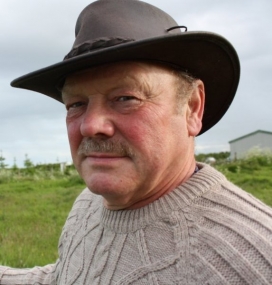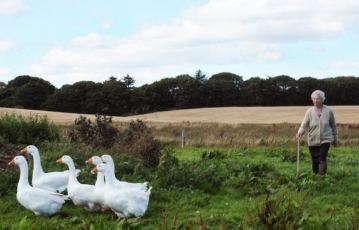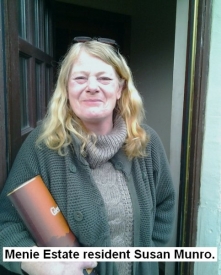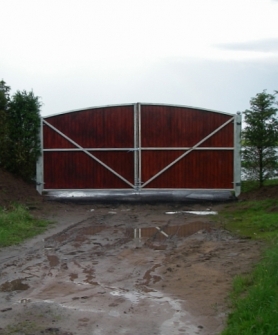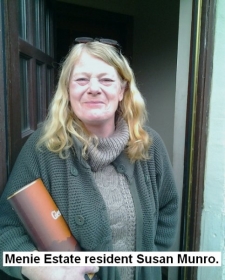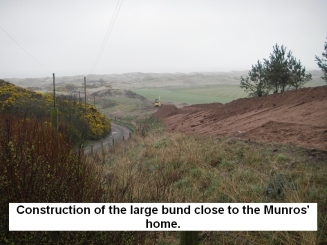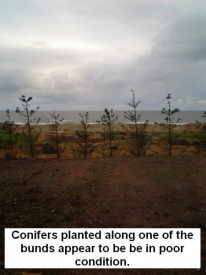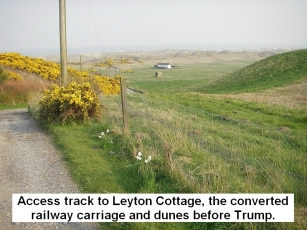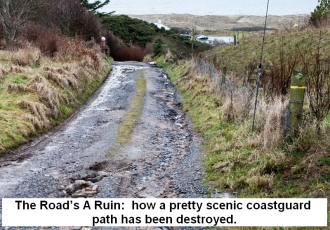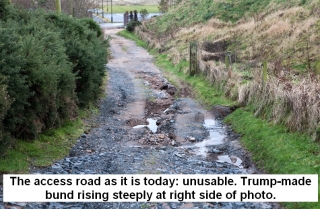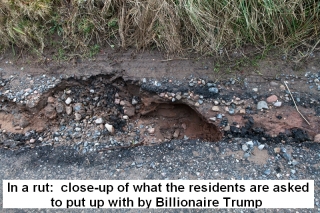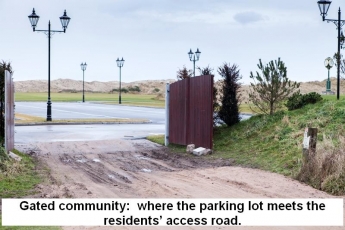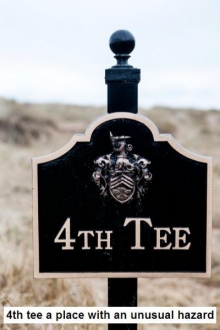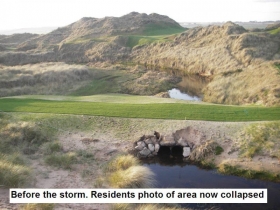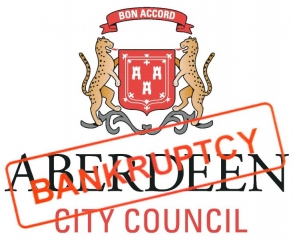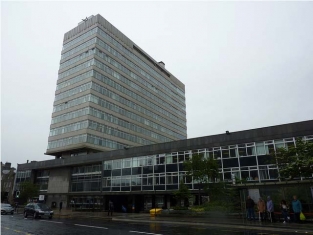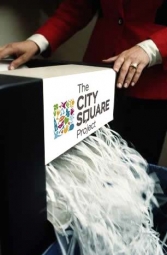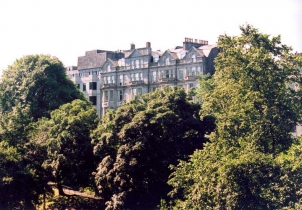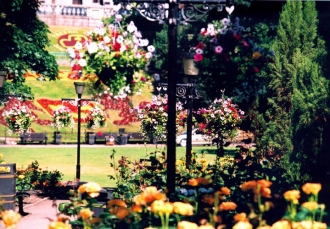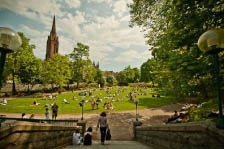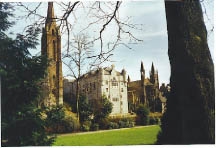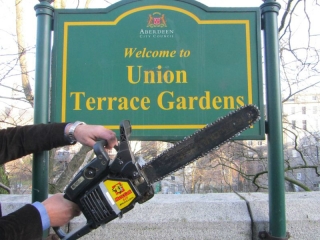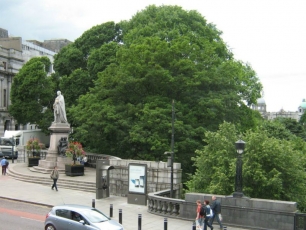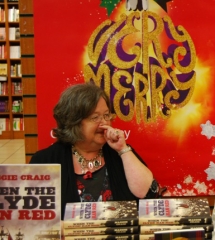In the fourth part of the series The Menie Estate, Suzanne Kelly looks at the roles different people played in writing the Balmedie Coast’s future. There were those who tried to uphold existing planning and environmental laws such as Martin Ford and Debra Storr. They were vilified and even assaulted in the case of former Councillor Storr.
Public servants and politicians held meetings with the Trump organisation while planning matters were pending, contrary to protocol – if not to law. At least one town planning professional seems to have colluded with Trump while the application was pending. This is the first half of the story of the people involved – that of the heroes.
Part 1: Heroes
In a perfect world, a world some of us thought was guaranteed by existing legislation, no one would be treated like the residents of the Menie Estate have been. The environment would have been likewise valued and protected, particularly as the land in question included a SSSI.
Local planning laws would have been respected, and councillors who sought to uphold existing laws would not have been mocked merely for upholding enshrined principles.
The national government would not have interfered in pending planning matters or discussed pending applications with interested parties. Journalists would have been free to report on stories without being arrested. Unfortunately, that world doesn’t exist.
In the face of powerful opposition, there were those who tried to do the right thing by law. There were people who used film and fine art to illustrate the issues. There were those who took a principled stand against the controversial development. And then there were some whose daily lives were made needlessly stressful, while the threat of compulsory purchase powers overshadowed their lives.
When I met with Menie Estate residents on 12 January 2013, some of them were keen to express thanks to people who have helped, or tried to help. This is a partial account of some of these remarkable people, who have made a difference.
Martin Ford
Vilified by the local press, Aberdeenshire Councillor Ford is mostly known to the public for his casting the vote which turned down the development when it was first voted on.
By rights, that should have been the end of the matter, but acting without precedent, the Scottish Government called the plans in. Ford voted against Trump’s golf course for tangible, logical reasons. These were many and complex, but included the fact the development would destroy (at least in part) the fragile SSSI site and compromise the ecology of the area.
The Trump plan to part finance the course and club was to build hundreds of holiday homes – something which meant a significant deviation from existing policy. For upholding existing law he was branded a ‘traitor’, vilified and abused in local media. His paper on the subject can be found at http://www.andywightman.com/docs/martin_ford_ch.pdf
Anthony Baxter & Richard Phinney
Baxter and Phinney are the men behind the documentary ‘You’ve Been Trumped’ – which beautifully illustrates the Menie situation environmentally, socially and procedurally.
They were arrested while filming, as is dramatically captured in the film. The arrest was for ‘breach of the peace’ on the say-so of a Trump employee.
They had gone to the estate office to ask how when water would be returned to the residents – Trump’s construction workers had managed to dam the water supply and left people without running water for a week with no help, apology or explanation.
If anything, the film makers were treated rather poorly by the site personnel. Later, while at Susan Munro’s house and despite being journalists, they were arrested and their equipment seized. A National Union of Journalists spokesperson said:-
“I think this must be one of the first cases in this country of journalists being arrested for just carrying out interviews to establish the truth and hold people to account.”
http://www.guardian.co.uk/world/2010/sep/12/film-makers-arrested-donald-trump-scottish-golf-resort
Later the charges were dropped (Baxter learnt this from the Guardian newspaper – not the police). While that might sound like a good outcome, it meant the police were never forced to account for the arrest, and Baxter and Phinney never got their day in court to give their side or clear their names properly.
Freedom of Information Requests by me and by others were answered with poor excuses, including the police claiming they were not able to give information on criminal charges brought against other people (the charges had been dropped when I wrote).
Baxter and Phinney largely financed the film themselves (Anthony Baxter mortgaged his home). ‘You’ve Been Trumped!’ went on to win awards around the world, shocking audiences wherever it played. The local press did not mention this film for a year, even when it premiered in Aberdeen, selling more quickly than the latest Harry Potter film had, or when it won awards world-wide.
Eventually David Ewen of the Evening Express wrote a piece on the film after its premier on national television; Ewen claimed ‘Baxter was unavailable for comment’ in his initial piece, even though the two men spoke within hours of Ewen’s first contact, according to Baxter.
Ewen, by the way, is author of a book entitled ‘Chasing Paradise – Donald Trump and the Battle for the World’s Greatest Golf Course,’ with a forward by Donald Trump. It was available at the Press & Journal/Evening Express shop in Aberdeen until the shop closed. The local press has supported the Trump faction from the outset. More on this support will appear in the next in this series of articles.
More information about ‘You’ve Been Trumped!’ can be found here: http://www.youvebeentrumped.com/youvebeentrumped.com/THE_MOVIE.html
Debra Storr
The former Aberdeenshire councillor has, like her colleague Ford, been vilified for her vote against the course. Like Ford she has spent time talking with the residents. She was assaulted on her own doorstep by a woman who supported Trump.
Correspondence between her and Dr Christine Gore (more on her later) can be found at http://www.debrastorr.org/2009/10/for-information-correspondence-between.html .
One thing this exchange shows is that the unelected were taking decisions which councillors felt they should be voting on.
Sam Coull
This former Aberdeenshire councillor also showed concern for the environment and compassion for the residents as Storr and Ford had. He did not mince words when he declared:
“I have seen and heard enough from your Trump to last me a lifetime – don’t send me any more of his simpering platitudes. No more – do you read me?”
Paul Johnston
Another Aberdeenshire councillor, he was disciplined for claiming Trump got a ‘sweetener’ from the shire (i.e. the taxpayer) in the form of land worth some £5 million. This was apparently so Trump would build 98 affordable homes. Whether or not these homes will emerge, and what will be deemed ‘affordable’ remains to be seen.
However, it appears the homes will not be anywhere near the aspirational course and clubhouse, as there are not enough local amenities.
These four councillors were the subject of a demand by the Trump Organisation to Aberdeenshire Council – Trump sought to have then excluded from any debates on the use of compulsory purchase orders (a means by which private land and homes can be bought if absolutely necessary – for municipal projects). Trump apparently branded these four ‘scoundrels’.
Dr David Kennedy
Dr Kennedy, a respected academic, returned his degree to Robert Gordon University (chancellor – Sir Ian Wood) when the decision was made to grant Trump an honorary doctorate. Kennedy’s views are summed up and captured eloquently in ‘You’ve Been Trumped!’
Alicia Bruce and David McCue – Artists
Whatever history eventually makes of this tale, two artists have captured the players for posterity.
Portrait artist David McCue features in ‘You’ve Been Trumped’; an exhibition of his portraits of Trump on site in the Forbes’ property were hung to great effect.
The portraits of Trump embody avarice and aggression; they contrast with the cooler colours and dignified portrait of Michael Forbes.
Alicia Bruce re-creates important paintings from all periods in art history as photographs of contemporary people and situations. Her works include powerful, defiant images of the Forbes family posed with pitchfork outside their barn, echoing ‘American Gothic’, (this piece was recently on show in the Royal Academy, Edinburgh) and an endearing, sensitive portrait of Molly Forbes with a gaggle of geese.
On her visits to the estate to take photos, Bruce has been accosted and aggressively treated by security forces. A recent such episode is documented here. http://www.aliciabruce.co.uk/news/trump-security-duckrabbit-the-daily-mail/
Tripping Up Trump
Tripping Up Trump is the pressure group which has stood against Trump and the destruction of the environment. The website provides the latest developments, information on past news, and other resources. The membership has swollen since the BBC screened ‘You’ve Been Trumped’ – which Trump tried unsuccessfully to prevent. Their mission statement is below; the website is http://www.trippinguptrump.com/ They are also found on Facebook and Twitter
Tripping Up Trump (TUT) has established itself as the popular movement against the use of compulsory purchase for private profit. TUT’s campaign has stood alongside the people and protected environment threatened by Donald Trump’s development in Aberdeenshire.
The TUT campaign has been key to Donald Trump’s retreat from the use of compulsory purchase orders.
The threat of forced evictions was deliberately held over the heads of the Menie families for nearly two years. Donald Trump’s track record shows he cannot be trusted to behave reasonably towards his neighbours or act responsibly towards the environment. He has bullied and mislead from the start.
TUT is committed to supporting the rights of the families at Menie and will highlight and seek to stop any further bullying or other wrongs by the Trump Organisation in Scotland.
We need your support. Please spread the word and join this important campaign.
Finally, the real heroes are the men and women who are trying to live normal lives in their homes at the Menie Estate.
Many have been there for decades; all of them love the land, the flora and fauna, and simply want to get on with their lives. As documented by Baxter, they have been tested in the extreme, quite unnecessarily and aggressively so.
Blocked water supplies, trespass, property damage, snapped power lines and aggressive security and greens-keeping personnel have all overstepped the mark in their treatment of these people. And yet they have all managed to do something Trump can’t quite master: they have kept their cool.
If anyone wishes to send them messages of support, letters, etc., please contact Aberdeen Voice; we will pass items to them for you.
Villains
There are many other heroes in the tale; but it was the villains who carried the day. It is really their story currently being enacted at Menie; without their actions (and indeed their interactions), things might be quite different. Who they are, how they are linked to each other, and some of their actions will be covered in Menie Heroes And Villains: Part 2 – Villains.
- Comments enabled – see comments box below. Note, all comments will be moderated.
